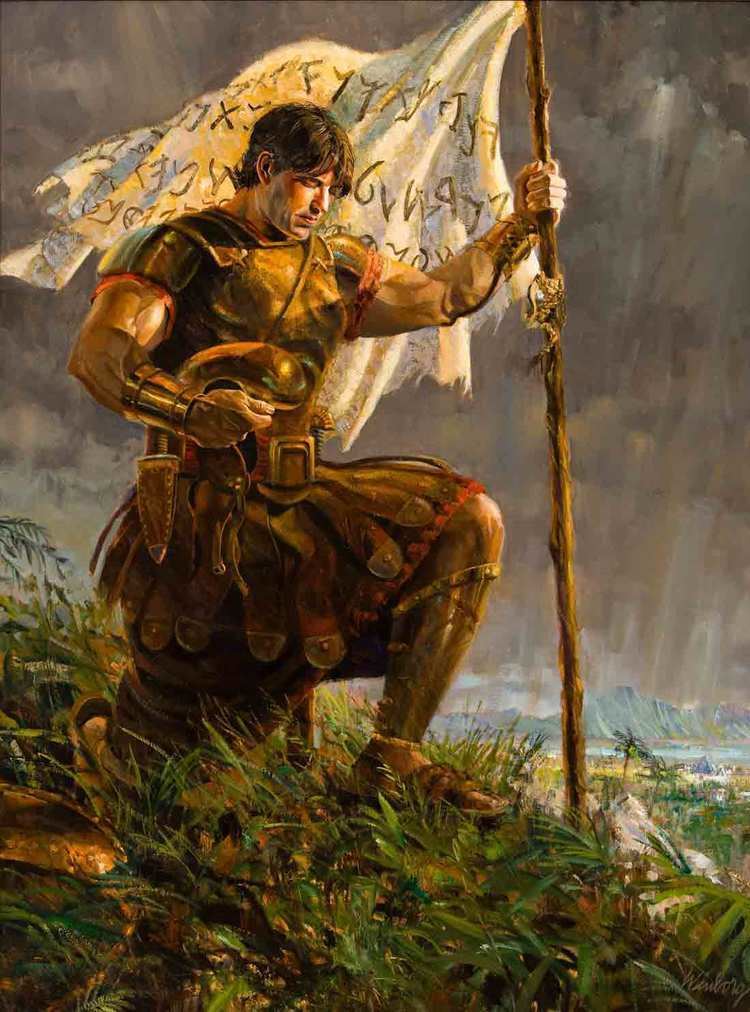 | ||
Captain moroni firm in the faith of christ complete version
According to the Book of Mormon, Captain Moroni was an important Nephite military commander and patriot who lived during the 1st century BC. He is perhaps best known for raising a "title of liberty" as a call to arms for his people to defend their country, family, freedom, peace, and religion. He is first mentioned in the Book of Alma as "the chief captain over the Nephites."
Contents
- Captain moroni firm in the faith of christ complete version
- Captain moroni alma 52 book of mormon video alma 48 17
- Early command
- Title of liberty
- King men
- Retirement
- Significance in modern Mormon culture
- References
Captain Moroni is presented as a righteous and skilled military commander. Among his accomplishments were his extensive preparations for battle and his fierce defense of the right of the Nephites to govern themselves and worship as they saw fit.
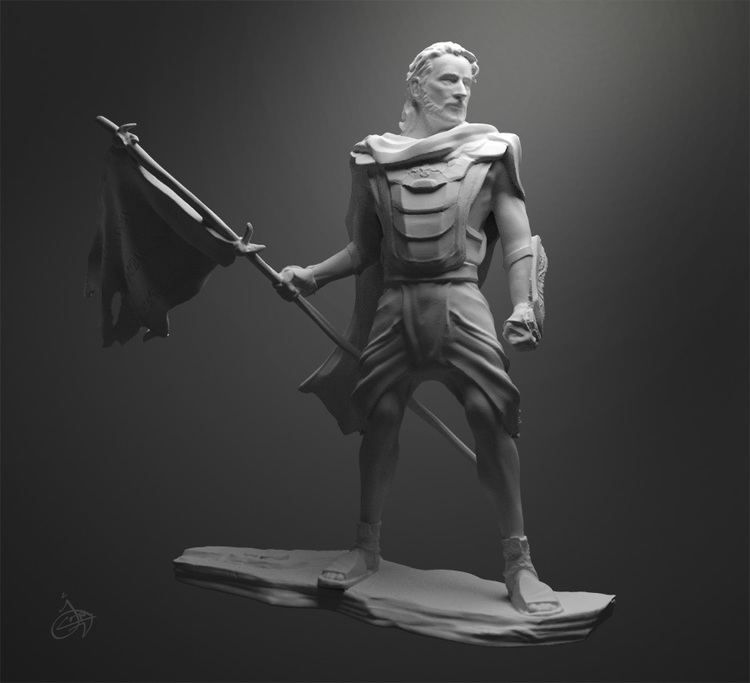
Captain Moroni shares a name with the prophet Moroni; the former is indexed in the LDS edition of the Book of Mormon as Moroni1.
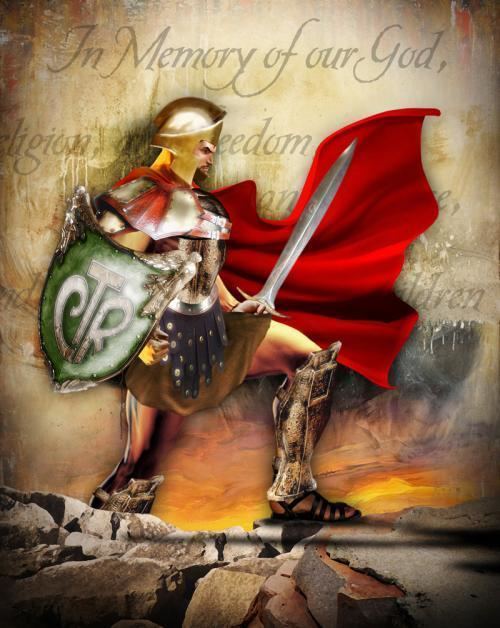
Captain moroni alma 52 book of mormon video alma 48 17
Early command

According to the Book of Mormon, Moroni was "only twenty and five years old when he was appointed chief captain" of the Nephites. The appointment came in response to a looming war with Lamanites and Zoramites, a force which was led by Zerahemnah and included many Nephite dissenters. The Lamanite army attacked the Nephites in the land of Jershon and the battle ended on the banks of the river Sidon. In this war, Moroni set to work readying the Nephite people with body armor for the first time. He sent spies to investigate the Lamanites' weaknesses, following which he led his troops with the plan to surround those of the Lamanites. Moroni's overriding objective was to defend his people and their right to worship their God as they pleased. Ultimately, Moroni met this objective, which resulted in keeping many of the Lamanites from ever coming to combat against the Nephites again.
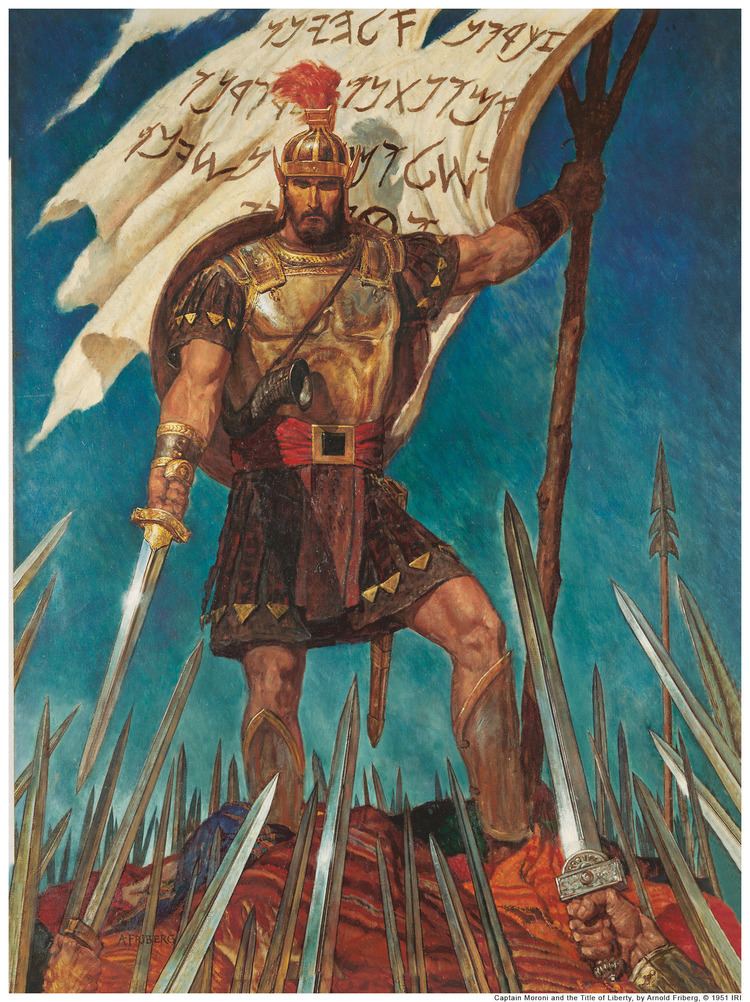
Moroni introduced to the Nephites revolutionary strategies in military tactics, safety, and precaution. He kept the people physically safe, while praying, guiding and leading his armies by divine intervention. He was also known by his people for his firm ideology and integrity and willingness to support the causes of personal freedom gaining the people's trust and never failed them.
Title of liberty
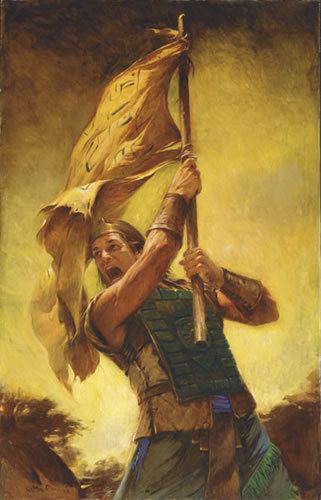
Moroni is associated with the "title of liberty", a standard which he raised to rally the Nephites to defend their liberties from a group of dissenters who wanted to establish their leader as a king. Moroni was so angry with Amalickiah's dissention and wicked influence that he tore his coat and wrote upon it, "In memory of our God, our religion, and freedom, and our peace, our wives, and our children". With these words, he rallied his people to defend their families and their freedom and drove out the armies of Amalickiah. Moroni put to death any dissenters who did not flee and who would not support the cause of freedom, and his “title of liberty” was raised over every Nephite tower.
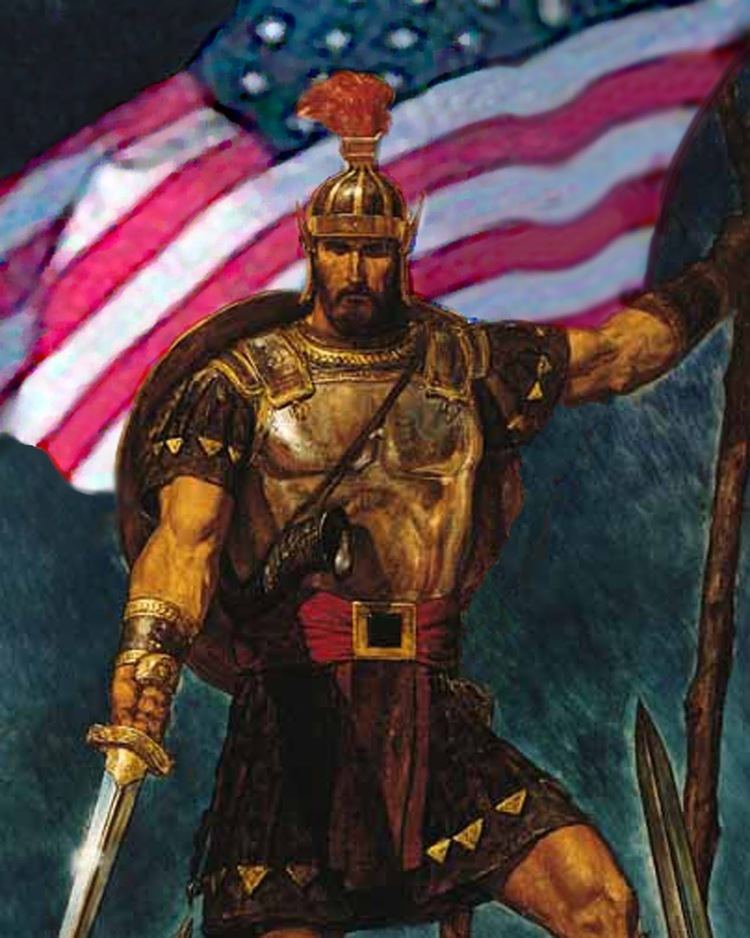
According to the Book of Mormon, Moroni sought to strengthen the Nephites spiritually so as to be better prepared against the Lamanites, leading Mormon to comment on Moroni's righteousness.
King-men
Years later, Moroni encountered problems with a group of men called "king-men", who were so called because they wanted to replace the chief judge and democracy with a king, an aim seen as destroying the liberty of the people. Moroni had written to Pahoran for help in the war, and the Lamanites attacked before the help could arrive. Moroni wrote again, chastising Pahoran in the process for failing to respond, even threatening to "stir up insurrections" against what he perceived to be the non-responsive government authorities. Pahoran wrote back, saying that the king-men had driven him from the judgment seat and he had been unable to respond to Moroni's requests for assistance. Moroni left command of his armies in the hands of his deputies and led an insurrection of the people against the king-men. The leader of the king-men, Pachus, was killed and his followers were taken prisoner. Moroni and Pahoran regained control of the city of Nephihah, which they had lost, restoring the previous form of government by judges.
Retirement
After fortifying the Nephites' lands, Moroni transferred command of his armies to his son Moronihah and permanently retired to his own home. Four years later, in the 36th year of the reign of the judges (or approximately 56 B.C.), Moroni died. According to the chronology of years, listing the time from when Moroni took command of the armies at age 25, he would have been approximately 45 years old when he died.
Significance in modern Mormon culture
The narrative of Captain Moroni plays a significant role in how members of the LDS Church understand and justify the political realities of war and violence. In this context, important aspects of Moroni’s narrative include that he “did not delight in the shedding of blood”, that his warfare was strictly defensive, that he sought the guidance of prophets before battle, and that he did not seek for power. When the U.S.-led War in Afghanistan commenced during the LDS Church's October 2001 General Conference, Gordon B. Hinckley announced commencement and referenced the story of Captain Moroni saying, “There are times when we must stand up for right and decency, for freedom and civilization, just as Moroni rallied his people in his day to the defense of their wives, their children, and the cause of liberty.”
Some Mormon authors, such as Nicholeen Peck, have drawn comparisons between the lives of Captain Moroni and General George Washington. Peck writes, "Many many years before George Washington, Captain Moroni did the same thing George Washington did. He wrote the Title of Liberty, and put on his military uniform, to show he would fight for his liberties if it was necessary." Mormon writer Heather Hemingway makes similar observations, noting that "Captain Moroni’s humility and valor is similar to that of George Washington during the winter of 1777-1778."
